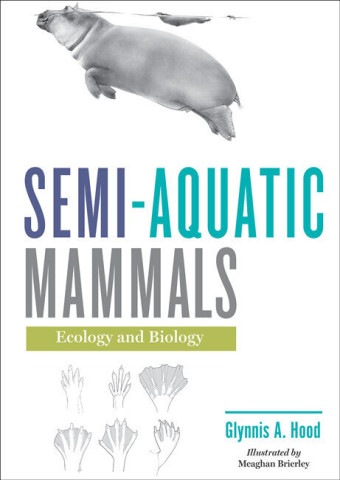A groundbreaking review of the seldom-studied semi-aquatic freshwater mammals, covering biology, behavior, and conservation.
Semi-aquatic mammals are some of the rarest and most endangered mammals on earth. What binds them together in the minds of biologists, despite their diverse taxa and body forms, are evolutionary traits that allow them to succeed in two worlds—spending some time on land and some in the water. Semi-aquatic Mammals fills a crucial void in the literature by highlighting the important ecological roles and curious biology of these remarkable animals.
In this unique book...
A groundbreaking review of the seldom-studied semi-aquatic freshwater mammals, covering biology, behavior, and conservation.
Semi-aquatic mammals are some of the rarest and most endangered mammals on earth. What binds them together in the minds of biologists, despite their diverse taxa and body forms, are evolutionary traits that allow them to succeed in two worlds—spending some time on land and some in the water. Semi-aquatic Mammals fills a crucial void in the literature by highlighting the important ecological roles and curious biology of these remarkable animals.
In this unique book, wildlife ecologist Glynnis A. Hood presents the first comprehensive examination of a global suite of 140 freshwater semi-aquatic mammals. Each one has overcome the distinct ecological challenges of thriving in both aquatic and terrestrial habitats as part of everyday life. Covering millions of years, Hood's exploration begins with the extinct otter-like Buxolestes and extends to consider the geographical, physical, behavioral, and reproductive traits of its present-day counterparts.
Hood explains how semi-aquatic mammals are able to navigate a viscous environment with almost no resistance to heat loss, reveals how they maintain the physical skills necessary to avoid predation and counter a more thermally changeable environment, and describes the array of adaptations that facilitate success in their multifaceted habitats. She also addresses specific conservation challenges faced by these mammals.
Her analysis takes readers to the haunts of intriguing semi-aquatic mammals from around the world,
• introducing the "paradoxical platypus," an Australian egg-laying monotreme that detects prey through electroreception
• venturing into the swamps and mangroves of Southeast Asia, where fishing cats wave their paws above the water's surface to lure prey
• trawling the streams and lakes of South America, where the female water opossum uses its backward-facing pouch to keep her babies warm during deep dives
• spending time with species that engineer freshwater habitats into more productive and complex systems, including North American beavers and Africa's common hippopotamus
Featuring award-winning artist Meaghan Brierley's stunning illustrations throughout, Semi-aquatic Mammals is an unparalleled reference on some of the world's most tenacious and fascinating mammals.






